Cano Island is a stunning tropical island located off the southern Pacific coast of Costa Rica. The island boasts an incredible diversity of marine life, making it a premier destination for scuba diving and snorkeling enthusiasts.
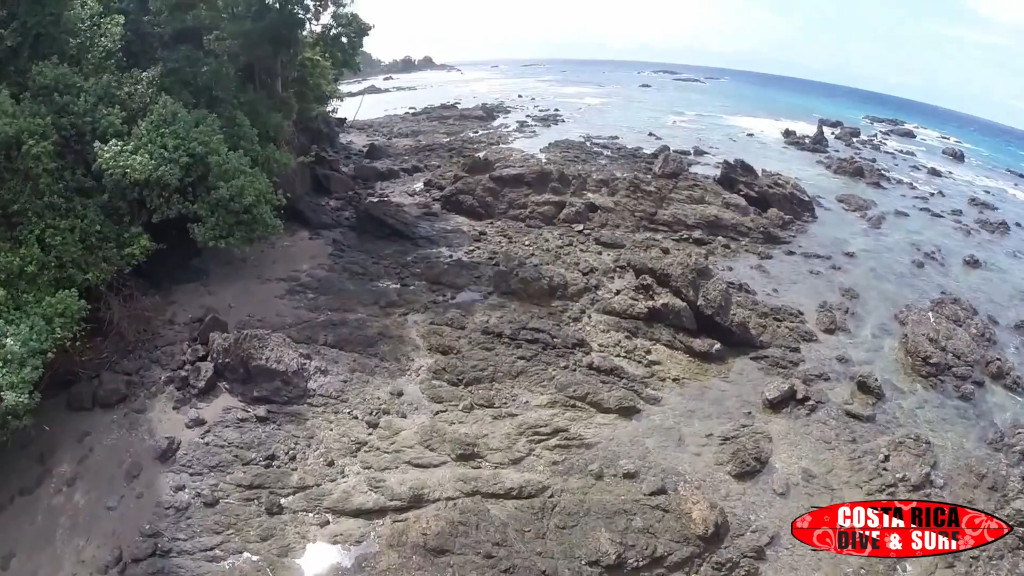
In addition to its aquatic wonders, Cano Island is also home to lush rainforests, exotic wildlife, and rich archaeological sites. To fully experience all that Cano Island has to offer, a knowledgeable and experienced tourist guide is essential. In this guide, we will explore the best activities, attractions, and tips for visiting Cano Island with the help of a professional guide.
What is the location of Caño Island?
Caño Island is an amazing marine reserve in Costa Rica. It is on the Pacific Ocean cost, approximately 20 kilometers far from the coast of the Osa Peninsula in Drake Bay.
The island is one of the main Biological Reserves in Costa Rica, as it is the Corcovado National Park, Marino Ballena National Park and Piedras Blancas National Park.
This heavenly place is the best diving spot in Costa Rica due to the excellent visibility under waters, the amazing underwater fauna, and its unique coral reefs.
As part of the province of Puntarenas and to the northeast of the Corcovado National Park, Caño Island has a great significant not only geographical but also archaeologically, as we will explain later.
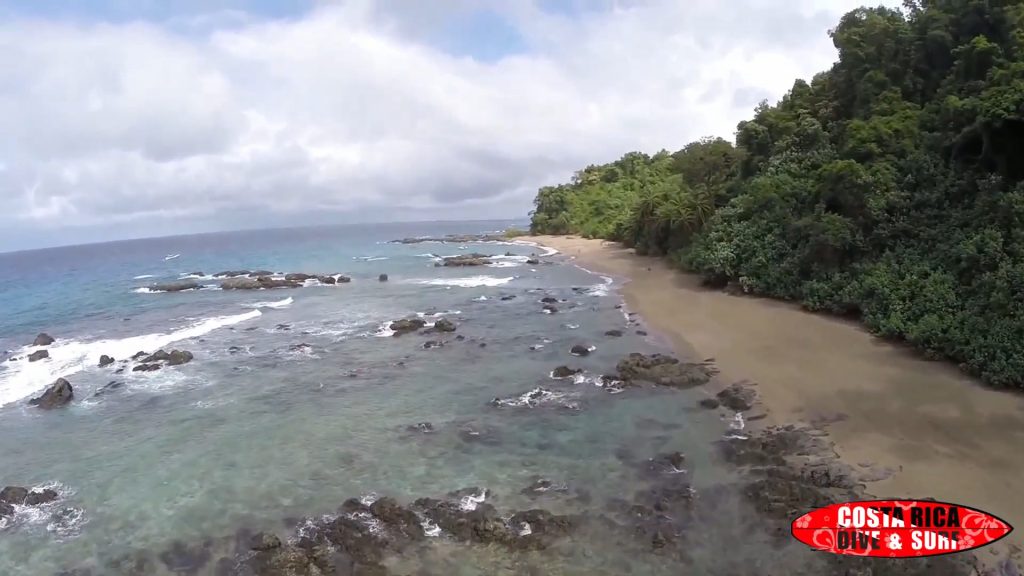
Characteristics of Caño Island Biological Reserve
Caño Island has 320 hectares of land surface and 5,800 marine hectares.
Archaeologists believes that the island was formed at around 50 millions years ago as a result of the movement of the tectonic plate.
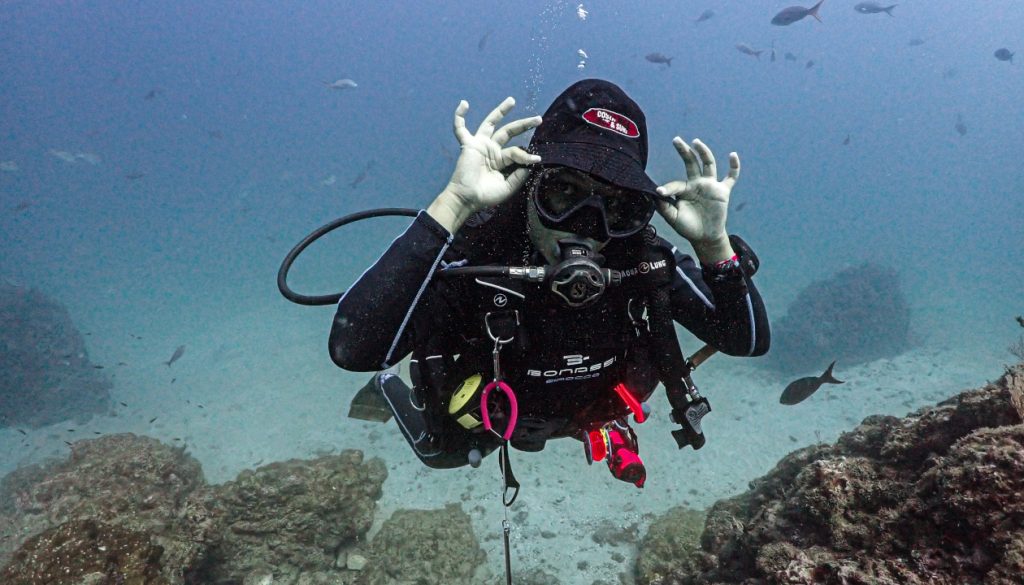
You will enjoy in the islad a large clean, white and sandy beaches, which partly disappear at high tide.
But the biggest attraction is down below, in the ocean.
There are five different coral platforms around this place.
The coral colonies here are favored by the formations offered by the volcanic rocks, which also give rise to all kinds of incredible fish, crustaceans and small mollusks to be home.
How to get to Caño Island?
To get to Caño Island you can make it only by marine transport, wich means, by boat or speedboat, from the communities of Bahía Drake, Bahía Uvita or Sierpe.
Climate of Caño Island
The average temperature on Caño Island ranges between 26 and 28 degrees Celsius.
Average annual rainfall is between 4000 and 5000 millimeters, and it should be noted that the rainiest months are between April and December.
Where to Stay?
Caño Island become part of the Corcovado National Park in 1976, and two years later it became a protected area with the name of Caño Island Biological Reserve, so that no one can carrie out a construction there.
Although you will probably not be able to sleep on the island, because there are no lodgings for turists, there are lots of comfortable hotels located not far from the place.
There is for example Drake Bay, which does have all the services of hotels and bungalows.
Near to the island there is also the city of Uvita. Uvita has umerous Spas, swimming pools and an attractive Indonesian-style architecture style.
Diving in Caño Island
If you are interested in diving for the first time, or you have never tried it before, diving in Caño Island may be your opportunity to get to know the amazing aquatic world , full of incredible fauna and flora. Without any doubt it will be a great memory for a lifetime.
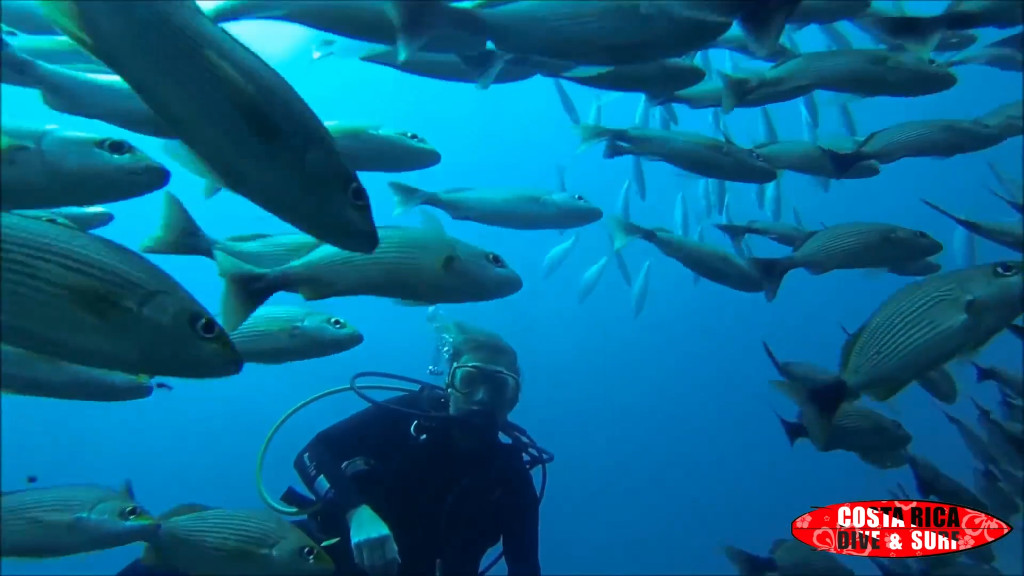
To do this, we recommend you take a basic diving course with Costa Rica dive and surf. After completing the course, you will receive a certification that will enable you to dive anywhere in the world.
The other option that you can consider, if you do not have much time, because the diving course lasts a couple of days, is to do a test dive.
The test dive is carried out with an instructor, who will be in charge of handling all the diving equipment, allowing you to enjoy the adventure.
For more information you can also see “Diving tour in Caño Island”
Dive spots around Caño Island
Caño Island, situated off the southwestern coast of Costa Rica, is renowned for its exceptional diving spots that offer a captivating underwater world teeming with marine life. The island’s surrounding waters boast crystal-clear visibility and a rich biodiversity, making it a must-visit destination for diving enthusiasts.
Bajo del Diablo
One of the prominent dive sites around Caño Island is “Bajo del Diablo,” an underwater pinnacle that attracts divers with its schools of colorful tropical fish and occasional encounters with pelagic species.
Another notable spot is “Paraiso,” where vibrant coral formations provide a stunning backdrop for exploring the diverse marine ecosystem. “El Barco” is a fascinating site featuring the remnants of a sunken ship, offering an intriguing exploration of underwater history.
Dorado
Its is a popular site known for encounters with large pelagic species, including sharks and rays.
La Cueva del Tiburón
Meanwhile, “La Cueva del Tiburón” (Shark Cave) offers an exhilarating experience as divers navigate through a cavern where white-tipped reef sharks often rest.
Coral Gardens
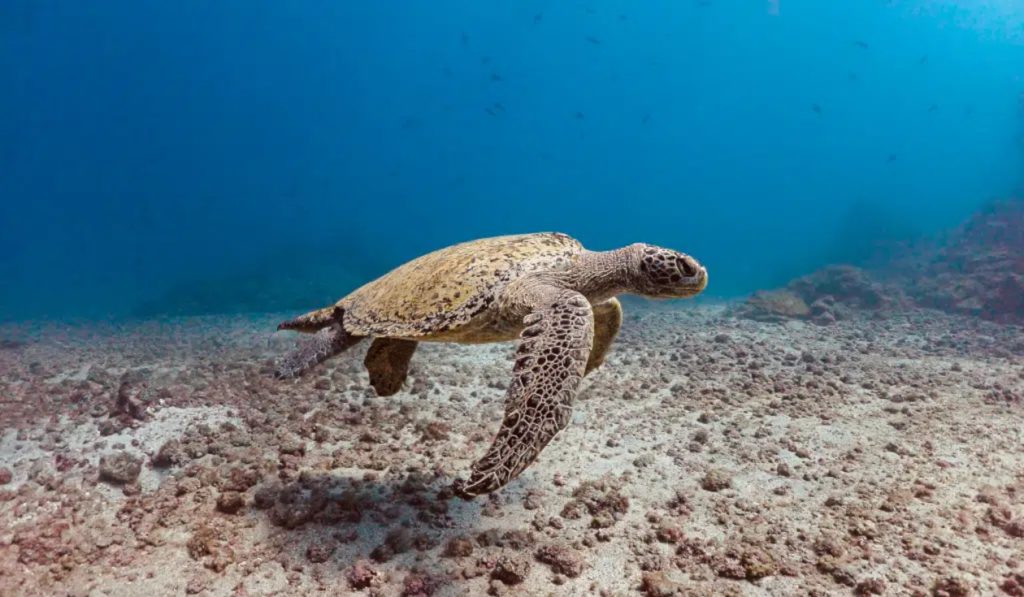
This place is a haven for macro photography enthusiasts, showcasing an abundance of small marine creatures amid intricate coral formations.
These dive sites collectively contribute to Caño Island’s reputation as a premier destination for underwater exploration at Cano Island, providing divers with an opportunity to witness the wonders of the Pacific Ocean’s marine life in a protected and biodiverse environment.
Map of the Area
Nearby Cities to Isla del Caño
Uvita
This beautiful town features restaurants and hotels. It is located an hour and a half from Isla del Caño. Uvita boasts over three kilometers of white sand and magnificent waters perfect for swimming.
Uvita is part of the Marino Ballena National Park, named after the humpback whales that can be seen here during their migration period. For more information, check out our guide: What to Do in Uvita? Activities, Places, and Prices.
Sierpe
Sierpe is not just a charming little town; it is the key to unlocking the wonders of Isla del Caño. Located on the Osa Peninsula, Sierpe is where your adventure begins. From here, you will board a boat and set off on a delightful journey through the winding Sierpe River.
As you cruise along, you’ll be surrounded by mangroves and wetlands teeming with wildlife, giving you a glimpse of the vibrant ecosystem that awaits on the island. This scenic trip is more than just a boat ride; it’s a reminder of how closely connected Sierpe and Isla del Caño are.
The town’s close ties with the island make it the perfect starting point for anyone eager to dive into Costa Rica’s natural beauty. For many, this journey from Sierpe to Isla del Caño marks the beginning of an unforgettable adventure in one of the country’s most pristine natural retreats.
Corcovado National Park
This park covers more than 41,000 hectares, and is the residence and permanent protection of more than 400 types of birds, 140 species of mammals, 116 types of reptiles and amphibians, 40 species of fish, as well as at least 500 different types of trees.
Among the most particular species of animals that we can find in Corcovado National Park is the Mico Harbor squirrel, the happy Eagle, the poisonous arrow toad, wild cats, crocodiles, pumas and jaguars, and around four species of sea turtles.
The temperature in this place is hot, humid and with a lot of rain during most of the year.
The virginal natural beauty of Corcovado National Park makes this site a perfect place for walks and excursions, with the possibility of taking a guided tour and fully enjoying this place.
What is the best season to visit Caño Island?
Every season is different and special. Around September the whales arrive, on their annual migratory journey, and it is possible to go see them with Costa Rica Dive and Surf.
Caño Island is located on the Pacific coast of Costa Rica, and for that region there are two main seasons that can be distinguished.
The dry and warm season on the one hand, which begins in December and lasts until April. The best conditions or diving, as well as the one with the highest tourist traffic, is registered from May.
Also in May the rainy season begins, which lasts until autumn.
Due to the constant rains, the lush vegetation of the Island becomes even more impressive, and it is something that attracts many tourists.
In relation to life and underwater activities in the rainy season, we can say that visibility decreases a little under the ocean, but even so it is optimal for diving and snorkeling.
National parks are a great attraction at this time.
Caño Island as Biological Reserve
As Caño Island have got the status of Biological Reserve, diving in the place is regulated, and the regulation allows only a maximum of 10 divers in five places open to the public.
With Costa Rica Dive and Surf you will be able to get to know this unique and wonderful island.
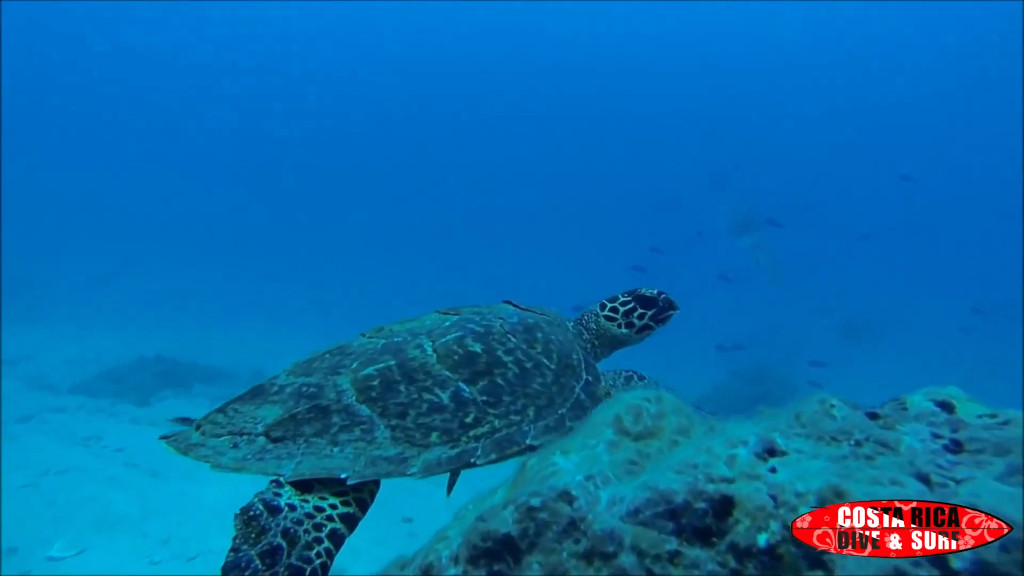
Through the declaration as a Biological Reserve to Caño Island, what we are trying to do is protect the wealth and the different types of marine reefs.
The Caño Island ecosystem is one of the healthiest and best-preserved reefs on the Pacific Coast of Costa Rica.
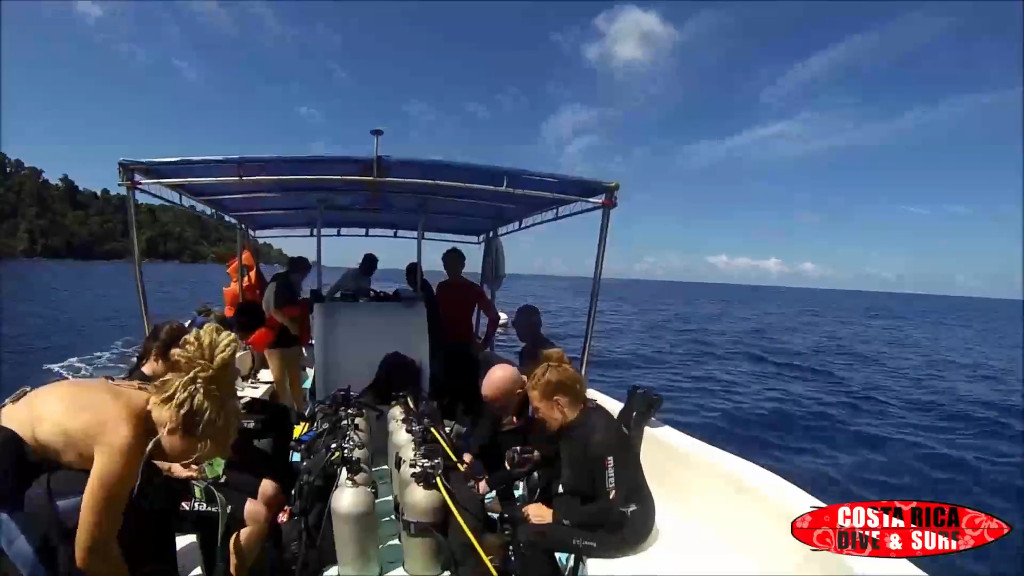
There is a variety of fishes, marine algae, invertebrates and mammals such as dolphins and whales that depend on the ecosystem of these reefs.
It is important to notice that Caño Island is a point of visit for humpback whales in their migration periods.
You can learn more about humpback whales and their migration, in our article “The Migration of Humpback Whales to Central America”
When did it become a Biological Reserve?
According to documentary records, the island become a Biological Reserve by Decree Law Number 6215 on March 9, 1978, and it was published in Gazette number 61 of March 29, 1978.
Brief historical review of Caño Island
The island was inhabited at different times by various ancestral groups.
Historians estimate that between 700 and 1500 B.C. the island was used as a cemetery by groups such as the Chiriquis societies.
Archaeologists also claim that the island was the permanent residence of the Quepos or Bruncas.
The ancestral groups that inhabited the island have left traces of their civilization in ceramic materials and stone carved materials, among which we can highlight the typical stone spheres of Diquís.
Chiriquí’s Societies-Gran Chiriquí Archaeological Region
It covers part of Costa Rica and Panama. The part of the Costa Rican área is known as the Diquís Archaeological Subregion.
It includes the southwest of the country, as well as the Atlantic foothills of the Cordillera de Talamanca.
One of the main characteristics of the Great Chiriquí is that the uniqueness of the stone sculpture.
In this region, a series of unique objects in the American continent were discovered, such as spheres, cylinders or barrels, and the double anthropomorphic sculptures of Barrels.
Quepos
The Quepoas, also called Quepos, were an Amerindian ethnic group from Costa Rica.
King Corrohore ruled the country when the Spaniards arrived in the 16th century.
They lived on the Pacific coast near what is now the Manuel Antonio National Park, in the so-called Cacicazgo de Quepo.
Bruncas
The Boruca (also known as Brunca, Brunka or Brunkajc) are a Central American native people that settledt in Costa Rica.
The tribe have approximately 2,000 members, most of whom live in a territory in the province of Puntarenas in the southeast of the country.
Ancestors of the modern Boruca constituted a group of peoples that ruled most of the Osa Peninsula.
The Boruca people, like their predecessors, are known for their handicrafts, especially weavings, and their unique balsa wood painted masks.
The annual ceremony of the “Game of the Little Devils” of Boruca, which has been held every end of the year since colonial times, features these masks as a significant element.
The festival represents the fight between the devils (the Boruca people) and the Spaniers conquerors, and it is accompanied by food, such as pork, tamales and the traditional drink: the “chicha”.
The mysterious “Spherical Stones of Caño Island”
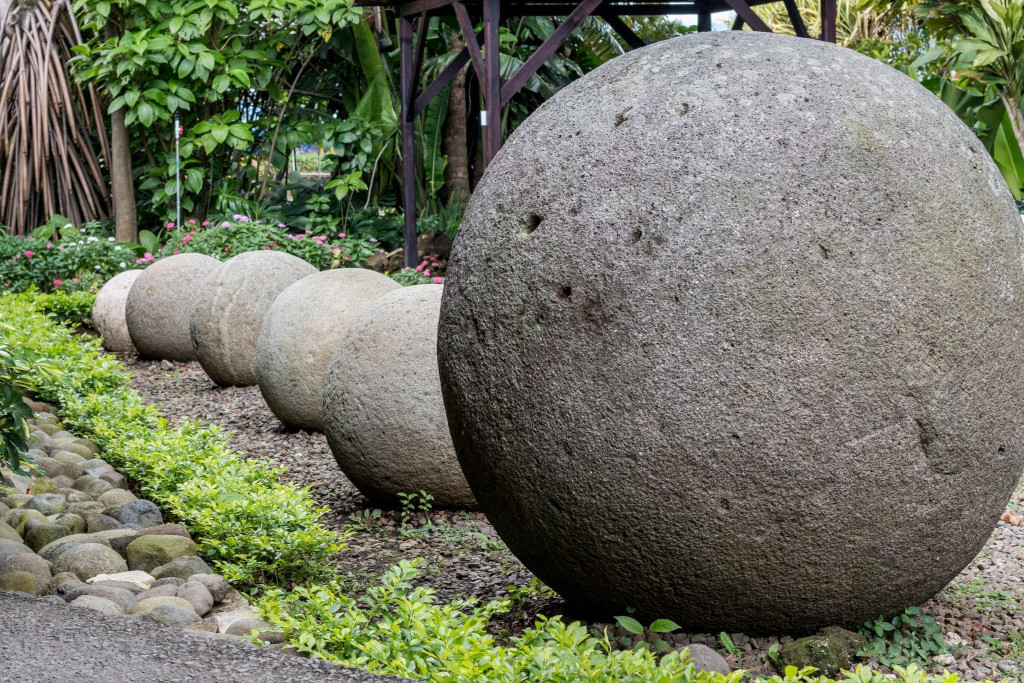
The spherical stones on Caño Island are historical evidence of its past. Caño Island is part of the Diquís stone sphere region. The effort required to transport the stones to the island’s 100-meter-high elevation indicates that the inhabitants were strong. Some spheres weigh over 500 kilos.
The island also has fragments of ceramic vessels, stone objects like grinding stones, and various ancient sculptures.
Fauna and Flora of Caño Island
The observation of the Humpback Whale (Megaptera novaenlinae) is optimal in the surroundings of Caño Island.
The Osa Peninsula and mainly Caño Island are highly important areas for the breeding of Humpback Whales.
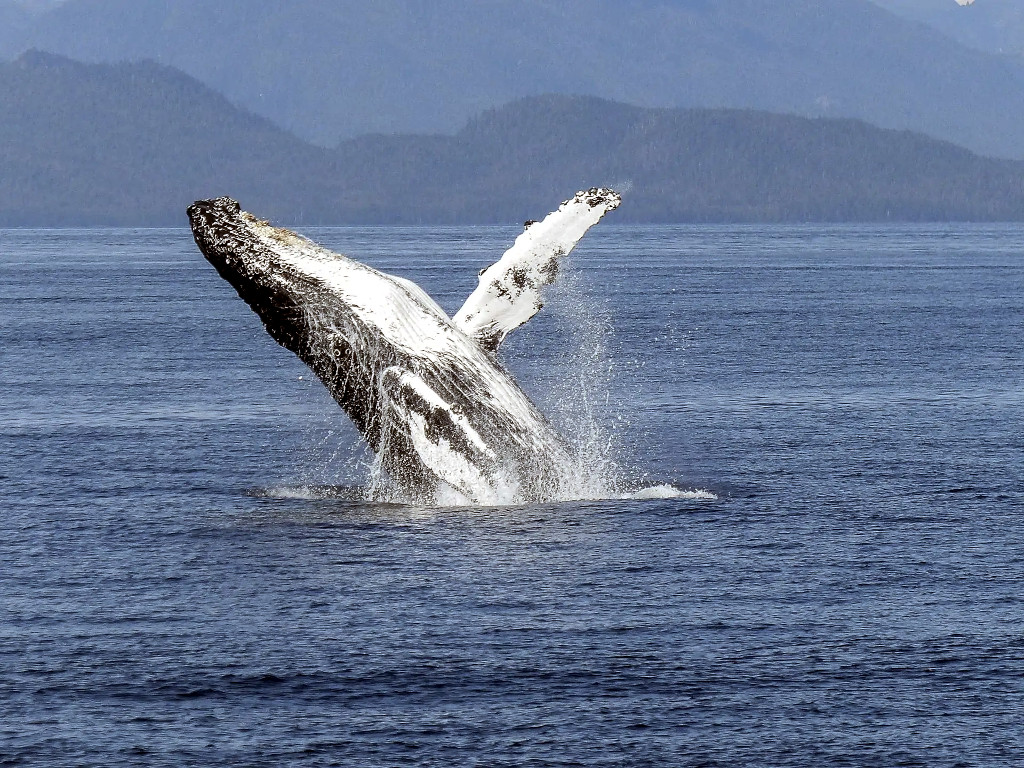
The Caño Island Biological Reserve is one of the world’s premier underwater adventure spots. Thanks in no small part to its pristine and crystal-clear waters.
The reserve is home to an incredibly diverse array of marine species, including fishes, whales, and sharks.
It offers a truly unique and unforgettable diving experience. It also is one of the best-preserved marine environments in Costa Rica.
No doubt a must-visit for anyone who wants to witness the beauty and wonder of these magnificent creatures in their natural habitat.
Thie island is home to around 158 species of higher plants and ferns.
A tropical forest covers the island, which, due to the constant rains, is always green.
There are also plant species that came later, such as mangoes, oranges, guavas and bananas.
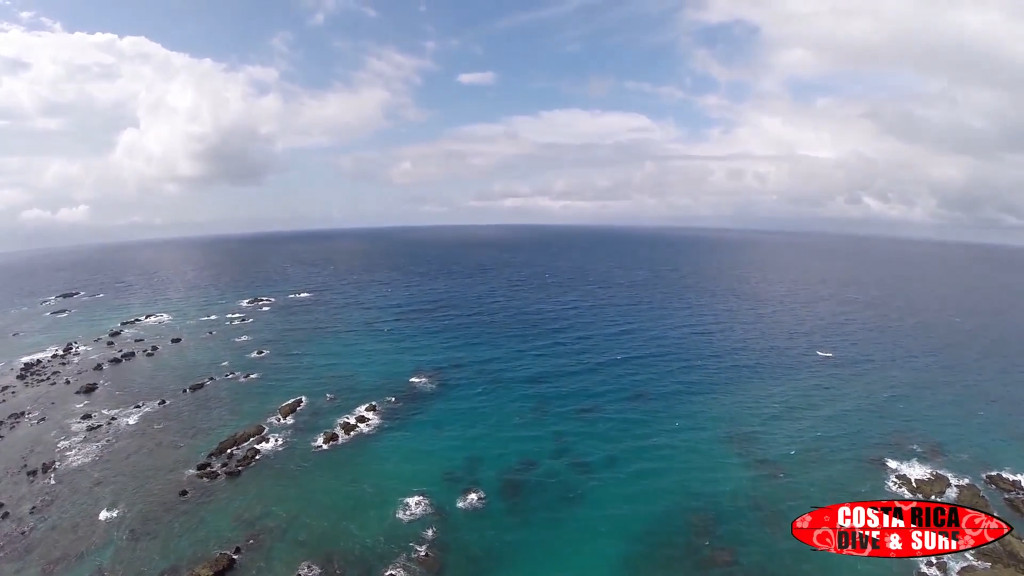
The so-called milk tree, for example, can grow up to 50 meters high. People call it as a milk tree because it releases a white liquid, similar to milk.
Epiphytic plants such as orchids and bromeliads are also part of the flora of Caño Island.
Birds
As far as we know there are at least 31 species of birds on the island. Those such as the pigeon, the hawk, the picofino and the yigüirro whose scientific name is turdus grayi.
The turdus grayi is the national bird of Costa Rica.
There are also seabirds such as fish eels, earwigs, brown pelicans and brown boobies.
Amphibians
On the island you will observe 4 species of amphibians and 9 species of reptiles.
The main reason is the high salinity of the island. However, you will also find sabaneras, boas snakes, lizards and frogs.
Insects
Among the insects you can find butterflies, 7 species of bees, beetles, and others.
Marine species
Among the marine species , you will find turtles, eels, dolphins, manta rays, pilot whales, white-fin sharks. And the endangered, humpback whale.
This chart shows when you can see the spectacular giant oceanic manta ray.
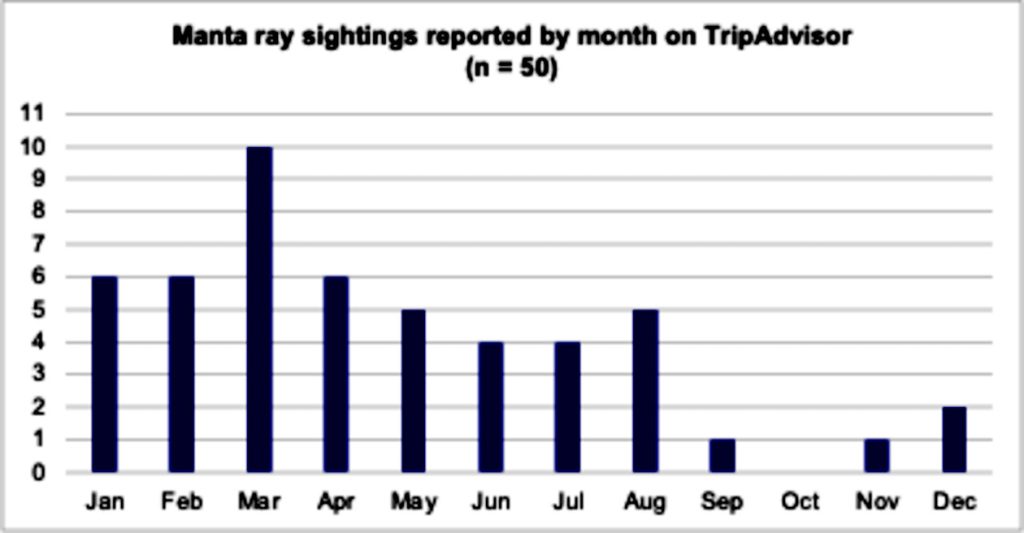
There are 7 species of freshwater, 60 species of mollusks and crustaceans, many of them also in danger of extinction.
Costa Rica has the longest humpback whale season in the world. You can see it in the following chart.
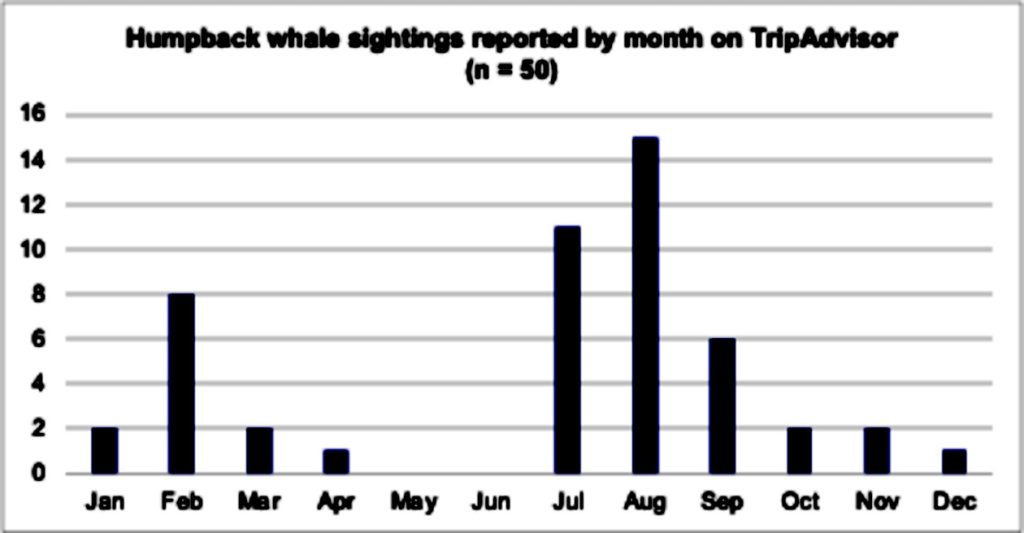
In the reef we can find 11 species of octocorals. reef fish, dolphins like the spotted. And you must know that the Island is also a good point of observation for the white tip shark.
How to take care of the marine life of Caño Island?
- Do not walk or stand on top of the corals
- When swimming or diving with a mask, do it only with a trained guide
- During diving it is important that you practice buoyancy control before diving
- Try not to touch the corals. They are organisms that can take hundreds of years to form.
- Do not drag the pressure gauge or other equipment
- Never touch or pick up any inhabitant in their habitat
In conclusion
Cano Island is a true gem of Costa Rica’s natural wonders. Offering visitors an unforgettable experience of tropical beauty and biodiversity. With its stunning coral reefs, diverse marine life, lush rainforests, and rich history,
Whether you are an avid scuba diver, nature lover, or simply seeking a relaxing tropical getaway, a visit to Cano Island with a knowledgeable and experienced tourist guide is a must. So pack your bags, grab your snorkeling gear, and get ready for an adventure of a lifetime.
